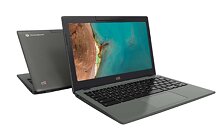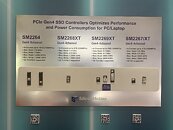Silicon Motion Announces Results for the Period Ended December 31, 2022, Discusses MaxLinear Acquisition
Silicon Motion Technology Corporation ("Silicon Motion" or the "Company") today announced its financial results for the quarter ended December 31, 2022. For the fourth quarter of 2022, net sales (GAAP) decreased sequentially to $200.8 million from $250.8 million in the third quarter of 2022. Net income (GAAP) decreased to $23.5 million, or $0.71 per diluted American Depositary Share ("ADS") (GAAP), from net income (GAAP) of $42.9 million, or $1.29 per diluted ADS (GAAP), in the third quarter of 2022.
For the fourth quarter of 2022, net income (non-GAAP) decreased to $41.1 million, or $1.22 per diluted ADS (non-GAAP), from net income (non-GAAP) of $51.2 million, or $1.53 per diluted ADS (non-GAAP), in the third quarter of 2022.
For the fourth quarter of 2022, net income (non-GAAP) decreased to $41.1 million, or $1.22 per diluted ADS (non-GAAP), from net income (non-GAAP) of $51.2 million, or $1.53 per diluted ADS (non-GAAP), in the third quarter of 2022.




















































